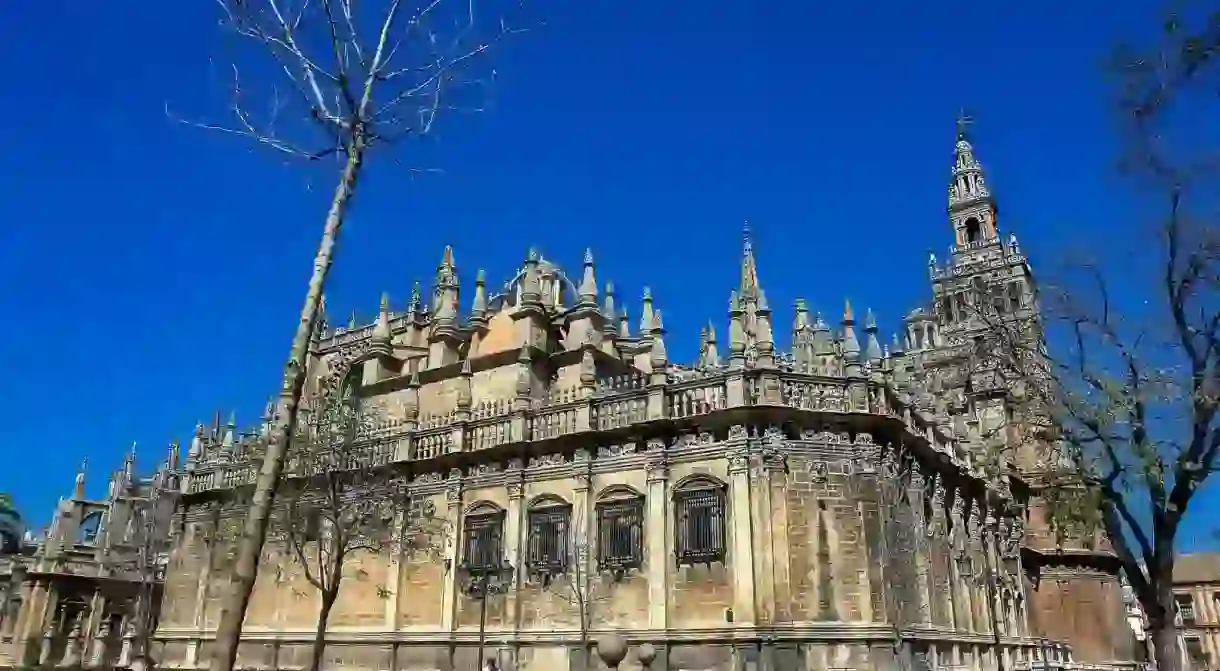A Brief History of Seville Cathedral

Dominating the centre of Seville is the city’s giant Gothic cathedral – the largest of its kind on the planet. As is so often the case in southern Spain, this magnificent tribute to Catholic dominion was built on the site of the city’s former mosque; it was intended not only as a display of the prestige and wealth Seville had accrued by the time of its completion in 1507, but also of the triumph of Christianity over the vanquished Moorish kings.
When the ruling Moorish Almohad family completed Seville’s great mosque in 1198, they had no way of knowing it had only a relatively short life ahead of it. In 1248, Seville was wrenched from Moorish control by King Ferdinand III, the proselyising Catholic monarch who had also taken the great regional capital of Cordoba in 1236. The mosque was immediately Christianised, but it wasn’t until 1401 that the decision was taken to erase it from history and build a Christian church on its site instead. For Ferdinand III, there was to be no compromise such as that struck in sixteenth-century Cordoba, when Charles V elected to build a cathedral on top of and in the midst of the city’s great mosque. Today, the only parts that have survived of Seville’s mosque are the famous Giralda belltower – previously the mosque’s minaret – the Patio de Naranjas and the Puerta del Perdon.

Construction was a long and laborious process and was not completed until 1507, some 106 years after the cathedral’s plans were first drawn up. Unlike some of Andalusia’s other great Christian churches though, it was actually fully completed: the cathedrals of Malaga and Granada, for example, were abandoned unfinished after funds ran out or were redirected elsewhere. Further work would be required on Seville’s Gothic masterpiece, as the dome collapsed in 1511 and 1888 – but on both occasions it was quickly restored to former glory. According to a popular legend, the original design committee of this cathedral wanted it to convey a clear message – namely, that it would be so “beautiful and so magnificent that those who see it will think we are mad”. If “mad” is read as “insane to attempt such a vast project when surely a smaller church would have sufficed”, then this gargantuan structure is definitely a success.

Inside, the scale is just as over-the-top and extravagant as you’d expect. The central nave is the longest in Spain and reaches a height of 42 metres. In total, this sprawling Gothic complex houses 80 chapels. The Capilla Mayor, or Main Chapel, features what is said to be the largest altar in the world (begun in 1482, it wasn’t completed until 1564) and its many adjoining rooms and smaller chapels contain a number of important art works, such as Goya’s “Santas Justa y Rufina”. Perhaps more famously though, Seville’s cathedral also contains the tomb of Christopher Columbus – the Spanish explorer whose discovery of the New World in 1492 was so crucial to Seville’s economic success in the 16th and 17th centuries.














